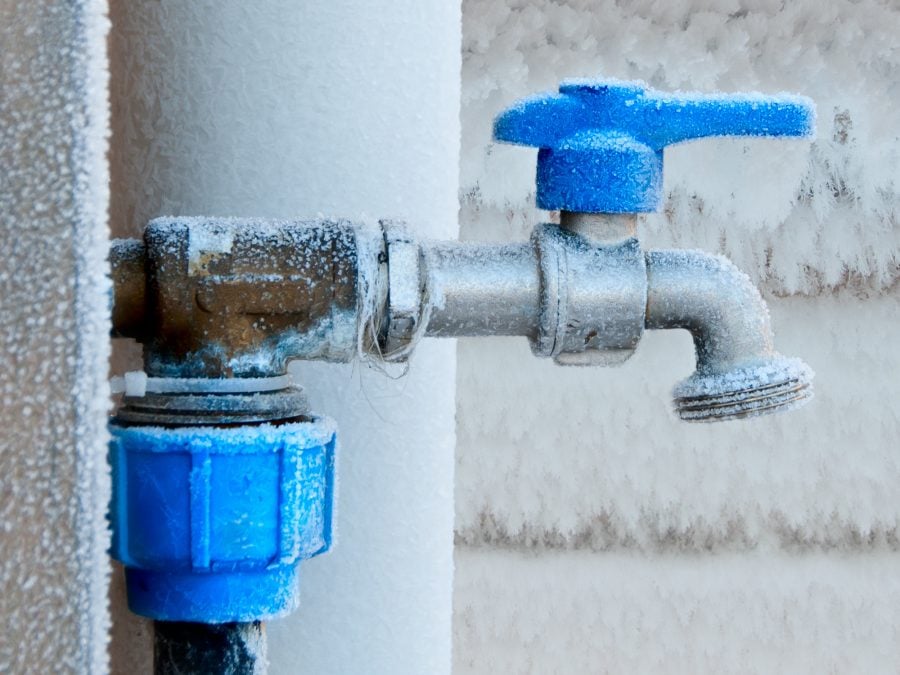Advice for Preventing Frozen Plumbing in Cold Weather: Professional Advice
Advice for Preventing Frozen Plumbing in Cold Weather: Professional Advice
Blog Article
Are you currently hunting for suggestions around Helpful Tips to Prevent Frozen Pipes this Winter?

Winter can damage your plumbing, particularly by freezing pipelines. Below's just how to avoid it from happening and what to do if it does.
Intro
As temperatures drop, the threat of icy pipelines rises, potentially leading to costly fixings and water damage. Recognizing exactly how to stop frozen pipelines is vital for homeowners in cold environments.
Prevention Tips
Protecting at risk pipes
Cover pipes in insulation sleeves or make use of heat tape to protect them from freezing temperatures. Focus on pipelines in unheated or exterior locations of the home.
Home heating methods
Maintain interior spaces properly warmed, particularly locations with plumbing. Open cabinet doors to enable warm air to flow around pipelines under sinks.
Just how to recognize icy pipes
Try to find reduced water circulation from taps, unusual odors or sounds from pipelines, and noticeable frost on exposed pipelines.
Long-Term Solutions
Architectural modifications
Think about rerouting pipes away from exterior wall surfaces or unheated areas. Add additional insulation to attic rooms, basements, and crawl spaces.
Upgrading insulation
Invest in top notch insulation for pipes, attics, and walls. Proper insulation assists maintain regular temperature levels and minimizes the danger of frozen pipelines.
Shielding Exterior Plumbing
Yard hose pipes and exterior taps
Detach and drain garden tubes before winter. Set up frost-proof spigots or cover exterior faucets with shielded caps.
Recognizing Frozen Pipelines
What creates pipes to ice up?
Pipes ice up when revealed to temperature levels below 32 ° F (0 ° C) for expanded durations. As water inside the pipelines freezes, it increases, putting pressure on the pipe walls and potentially causing them to burst.
Risks and damages
Frozen pipelines can lead to supply of water disruptions, property damages, and pricey repairs. Burst pipes can flood homes and create comprehensive architectural damage.
Signs of Frozen Piping
Identifying frozen pipelines early can avoid them from rupturing.
What to Do If Your Pipes Freeze
Immediate activities to take
If you presume frozen pipelines, keep faucets open to eliminate stress as the ice thaws. Utilize a hairdryer or towels soaked in warm water to thaw pipelines slowly.
Final thought
Preventing frozen pipelines calls for aggressive steps and fast feedbacks. By understanding the causes, indications, and preventive measures, house owners can shield their pipes during winter.
5 Ways to Prevent Frozen Pipes
Drain Outdoor Faucets and Disconnect Hoses
First, close the shut-off valve that controls the flow of water in the pipe to your outdoor faucet. Then, head outside to disconnect and drain your hose and open the outdoor faucet to allow the water to completely drain out of the line. Turn off the faucet when done. Finally, head back to the shut-off valve and drain the remaining water inside the pipe into a bucket or container. Additionally, if you have a home irrigation system, you should consider hiring an expert to clear the system of water each year.
Insulate Pipes
One of the best and most cost-effective methods for preventing frozen water pipes is to wrap your pipes with insulation. This is especially important for areas in your home that aren’t exposed to heat, such as an attic. We suggest using foam sleeves, which can typically be found at your local hardware store.
Keep Heat Running at 65
Your pipes are located inside your walls, and the temperature there is much colder than the rest of the house. To prevent your pipes from freezing, The Insurance Information Institute suggests that you keep your home heated to at least 65 degrees, even when traveling. You may want to invest in smart devices that can keep an eye on the temperature in your home while you’re away.
Leave Water Dripping
Moving water — even a small trickle — can prevent ice from forming inside your pipes. When freezing temps are imminent, start a drip of water from all faucets that serve exposed pipes. Leaving a few faucets running will also help relieve pressure inside the pipes and help prevent a rupture if the water inside freezes.
Open Cupboard Doors
Warm your kitchen and bathroom pipes by opening cupboards and vanities. You should also leave your interior doors ajar to help warm air circulate evenly throughout your home.

I found that content about How to Prevent Your Pipes From Freezing while browsing on the web. If you please take the opportunity to distribute this page if you liked it. I thank you for reading our article about Prevent Frozen Pipes .
Schedule A Free Estimate Report this page